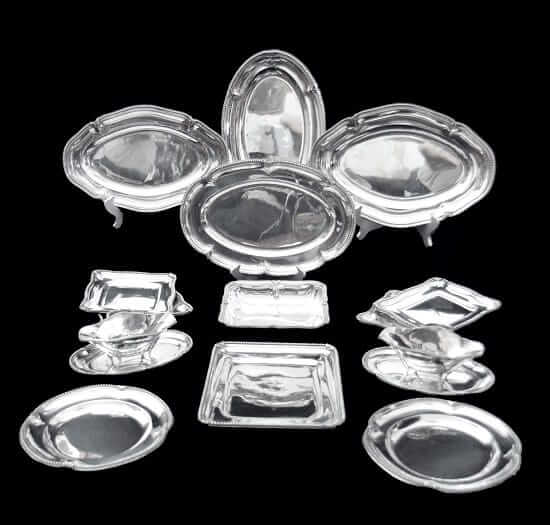What’s the Difference Between Sterling Silver and Silver?
29/06/2018Daniel Fisher
Free & fully insured UK Delivery. Learn more
Secure & flexible payments. Learn more

Buyback Guarantee Learn more
When people buy and sell silver, they often use the terms sterling silver and silver interchangeably. The precious metal is much in demand, thanks to rising demand from the industry, as well as increased scarcity in recent years. Silver is, of course, a popular metal, as it is 75 times cheaper than buying gold. Basically, it would take around 75 troy ounces of silver to buy one troy ounce of gold, at the current gold-silver price ratio. As silver prices continue to escalate, there is increased interest in the white metal from customers all over the world.
So, is sterling silver and silver the same thing after all? Actually, sterling silver is an alloy of silver. When we use term ‘fine silver’, we are in fact referring to silver with a purity of 99.9%. However, sterling silver has a purity of only 92.5%. The balance 7.5% consists of other metals, which we will discuss shortly. Like gold, silver is an amazing conductor of heat and energy. It is also a soft metal in its pure form. Due to this, 99.9% pure silver is not a good choice for making artefacts, jewellery, cutlery, etc. Sterling silver was therefore created by metallurgists in order to have a metal to work with, that was hard and durable enough to be able to hold the shape of an item.

Sterling silver is a popular choice for making kitchenware
Steel, which is an alloy itself is sometimes added to silver to make sterling silver. Other metals of choice include copper, nickel or zinc. So, when sterling silver is made, the balance 7.5% is made of these base metals. The addition of base metals may enhance the stability of the metal, but it also causes loss of lustre and the metal becomes tarnished over time. Tarnishing is a common feature of most alloys and if sterling silver is not polished regularly, the shine starts to fade. Basically, on exposure to air or water, sulphur compounds react with the sterling silver and a black sulphide layer is created on the surface, which fades the lustre from the surface. On the other hand, pure silver does not tarnish easily.
Interested in buying silver? Download our FREE Insiders Guide to silver investment first
Sterling silver is cheaper than pure silver and is often used in the making of kitchenware, particularly cutlery. These include spoons, knives, forks, etc. Prior to stainless steel cutlery being introduced, sterling silver was the material of choice for cutlery making and this cutlery needed to be polished every day. Utensils made out of sterling silver also need to be used every day, as lack of use causes reactions with the air and the items start to look tarnished.
Our silver experts can help you identify the differences between sterling silver and fine silver. Since it is a popular choice, many items that are actually made of sterling silver are referred to as silver. It is important that our buyers are well aware of what they are buying. Call a member of our team on 020 7060 9992 or get in touch online via the contact page on our website. All the silver products sold by us carry a certificate of authenticity and a buyback offer. You can also get more information on our website about the various silver products that we do.
Image credit: Pixabay
Live Gold Spot Price in Sterling. Gold is one of the densest of all metals. It is a good conductor of heat and electricity. It is also soft and the most malleable and ductile of the elements; an ounce (31.1 grams; gold is weighed in troy ounces) can be beaten out to 187 square feet (about 17 square metres) in extremely thin sheets called gold leaf.
Live Silver Spot Price in Sterling. Silver (Ag), chemical element, a white lustrous metal valued for its decorative beauty and electrical conductivity. Silver is located in Group 11 (Ib) and Period 5 of the periodic table, between copper (Period 4) and gold (Period 6), and its physical and chemical properties are intermediate between those two metals.